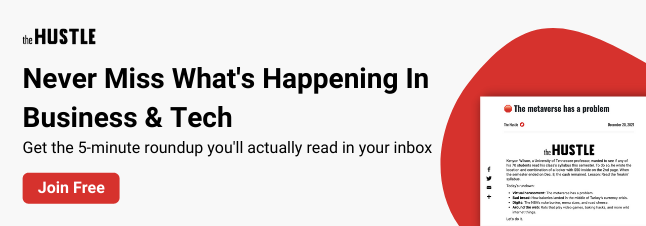Do you ever worry about your employees’ productivity, even without evidence of a problem? You might suffer from productivity paranoia, a phenomenon that impacts concerned leaders managing hybrid and remote employees.

You worry your employees don’t work enough. But your employees feel like they work too much. This gap can create a toxic work environment, so prevent it by understanding productivity paranoia, its causes, and its remedies.
Table of contents:
What is productivity paranoia?
%20(1).png?width=650&height=250&name=Minimum%20Viable%20Product%20new%20products%20that%20allow%20teams%20to%20capture%20the%20maximum%20amount%20of%20customer%20data%20using%20the%20least%20amount%20of%20effort.%20(12)%20(1).png)
Productivity paranoia occurs when business leaders feel uncertain about their employees’ work ethic, even if evidence suggests growing workloads. Employees could work long hours and produce excellent work, yet productivity paranoia causes their managers to regard their productivity as low.
Microsoft coined the term after research uncovered a strong disconnect between managers’ perceptions of productivity and reality. According to their survey of +20k employees, almost nine in 10 view themselves as productive. Yet only 12% of managers feel fully confident about their team’s productivity.
On top of that, the number of meetings per week increased 153% in the middle of 2022, as employees’ workloads and productivity grew through the pandemic. With no signs of stopping, this productivity level will likely become the new baseline.
Yet leaders have doubts about their employees’ productivity, especially when managing hybrid or remote employees. In fact, 85% of managers believe the shift to hybrid work has made it difficult to feel confident in their workers’ productivity levels.
Unaddressed, productivity paranoia causes:
- Burnout
- Decreased employee satisfaction
- Reduced psychological safety
- Strained relationships between employees and managers
- Decreased productivity
Productivity paranoia causes and solutions
1. Lack of prioritization
.png?width=650&height=394&name=01-Blog-Productivity-Paranoia-72%20(1).png)
If an employee receives unclear instructions, they may focus on the wrong tasks to seem productive. They may accept meeting after meeting in place of finishing assignments, or focus too heavily on day-to-day work instead of higher-level tasks.
Without effective prioritization, employees focus on potentially unimportant assignments — which can trigger productivity paranoia among managers. Only two in 10 employees feel in control of their daily workload, so managers must empower their direct reports to focus on what matters.
Managers can create better prioritization by:
- Communicating with senior leadership on what the organization and, in turn, their team should prioritize
- Providing clear guidelines on what employees should focus on
- Empowering them to set aside time to work on strategic tasks
2. Lack of trust
.png?width=650&height=394&name=02-Blog-Productivity-Paranoia-72%20(1).png)
Hybrid and remote managers struggle to oversee their employees. They cannot walk to an employee’s desk, check in on them, and feel assured about their productivity, even if 35% of remote workers feel more productive than they did in person.
This often triggers employers to make use of observational software, which almost seven in 10 companies with 500+ employees use. Some apps take random photos throughout the day to see how often an employee walks away from their computer, while others look at mouse movements and keys clicked.
But this does not effectively measure an employee’s productivity. These tools only give workers a way to feign productivity, by moving their mouse, keeping their laptop on, or typing up emails, a form of “productivity theater.”
Unsurprisingly, a lack of trust goes hand in hand with productivity paranoia. Managers may look at unhelpful metrics via observational software and, without context, assume their remote employees do not work enough.
To build trust and, in turn, reduce productivity paranoia, managers can:
- Communicate honestly and admit mistakes
- Hold themselves and others accountable
- Follow through on promises
- Reduce micromanagement
3. Greater pressure on CEOs
.png?width=650&height=394&name=03-Blog-Productivity-Paranoia-72%20(1).png)
Managers may also feel pressured to turn up the heat on their employees' productivity levels. Economic downturns, climate change, inflation, layoffs, and an ever-growing list of problems continue to put pressure on CEOs and, down the line, managers to compensate with even more productivity.
Consider a company finishing up a round of layoffs. Afterward, managers may feel an intense pressure to ensure themselves and their employees stay employed. This may cause them to scrutinize the effectiveness of their employees — even if they consistently perform well — manifesting in productivity paranoia.
If a CEO feels pressured from external conditions, they should take a step back and ask whether their employees can perform any better. They can do this by running a survey, for example, and asking employees about their current work conditions. If the survey reveals problems with burnout, this indicates a need to look outside of worker productivity to reduce pressures on company performance — such as improving your supply chain or marketing.
4. Disconnect between managers and employees
.png?width=650&height=394&name=04-Blog-Productivity-Paranoia-72%20(1).png)
The media characterizes a stereotypical relationship between a worker and boss as antagonistic. Reality concurs: One in three employees feel disconnected from their leaders, with 80% of American workers reporting major trust issues with their management.
This creates an unsustainable dynamic. Managers might view their employees as defiant and looking to cut corners, while employees might characterize their managers as cruel and impossible to please. As a result, productivity paranoia festers.
To build positive manager-employee relationships, consider:
- Creating mutually agreeable SMART goals for the employee
- Asking for employee feedback
- Following up on feedback
- Showing appreciation for employees through shoutouts or bonuses
- Maintaining consistent one-on-one meetings
5. Unrealistic expectations
.png?width=650&height=394&name=05-Blog-Productivity-Paranoia-72%20(1).png)
Almost six in 10 employees feel stressed at work, largely because of unrealistic expectations. Managers might lack awareness about their employees schedules and abilities, especially at the start of their employee’s role. So, they offload too much, causing employees to produce sloppy work, miss goals, and burn out.
When an employee misses a goal or fails to meet expectations, the manager might pin it on their low productivity. In other words, the fault lies not in the manager, but the employee’s poor work ethic. Consequently, productivity paranoia grows.
Unrealistic goals and expectations arise from a lack of open communication. A manager and employee might meet regularly, but if their relationship feels closed off, an employee might never express concerns over burnout or not reaching goals. To solve this problem, consider:
- Creating an open relationship between a manager and employee by admitting mistakes and showing vulnerability
- Asking for feedback from the employee on how to improve their manager’s leadership style
- Building a space that accepts mistakes and moves forward from them
6. Inadequate communication
.png?width=650&height=394&name=06-Blog-Productivity-Paranoia-72%20(1).png)
According to a Forbes survey, poor communication negatively impacts the productivity of 49% of respondents. In a remote environment, this problem worsens. Employees and managers must communicate regularly with one another, but often via faceless email and instant messaging.
A manager might struggle to evaluate the productivity of an employee if communication happens too infrequently. Weekly project updates, for example, might not give a manager enough information on their employees’ overall productivity. Poor communication subsequently causes productivity paranoia, as a manager feels out of the loop.
Organizations can resolve this by:
- Setting expectations between managers and employees, such as how often check-ins should happen
- Creating more collaborative opportunities between managers and employees, reducing the walls between them
- Establishing communication-method preferences, whether that means using email for project updates and instant messaging for casual conversations
7. Micromanagement
%20(1).png?width=650&height=394&name=07-Blog-Productivity-Paranoia-72%20(2)%20(1).png)
Managers who want to ensure the productivity of their employees might lean into micromanaging. This might look like daily check-ins, frequent emails asking for updates, and constantly providing feedback on work.
Eventually, this creates a dynamic that implies a manager must observe every part of an employee’s job to assure their productivity — AKA productivity paranoia.
But this produces an unintended effect: 55% of workers dealing with micromanagers believe they negatively impact their productivity. If a manager wants to control the productivity of their workers, that comes at the expense of their team’s effectiveness.
To reduce micromanaging, consider:
- Letting go of managing an employee’s smaller, day-to-day tasks
- Asking for feedback on a manager’s leadership style
- Giving employees tasks or projects to work on without your supervision
- Building accountability that sets expectations, such as follow-ups on not meeting goals or producing low-quality work




![7 Habits of Highly Effective People [Summary & Takeaways]](https://www.hubspot.com/hubfs/7-habits.jpg)








